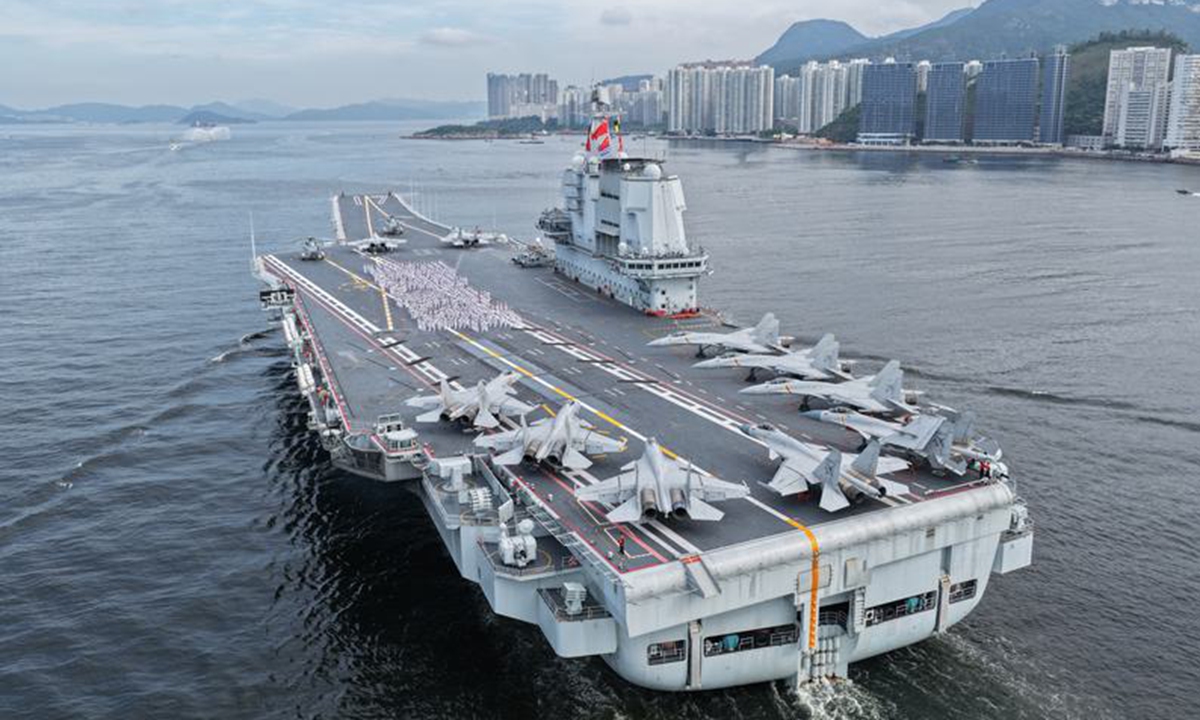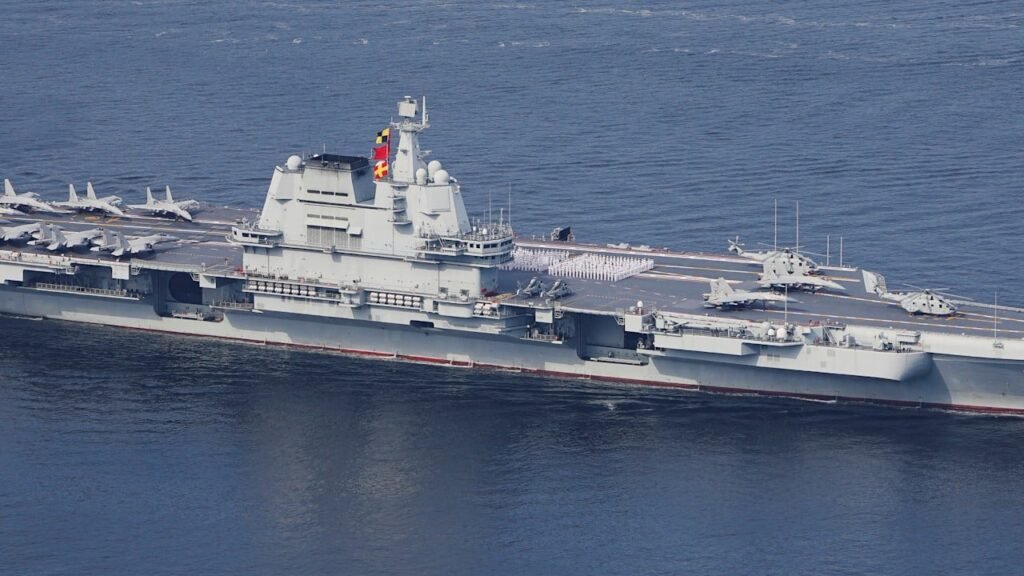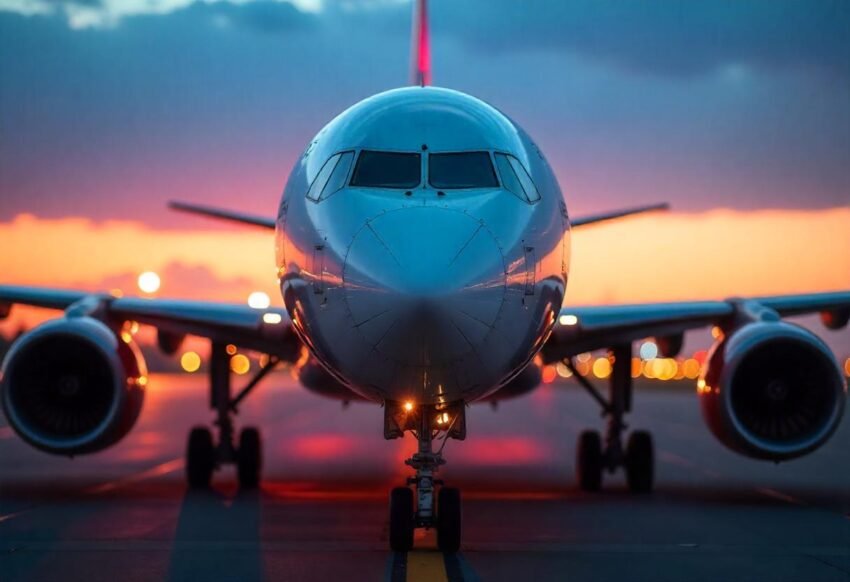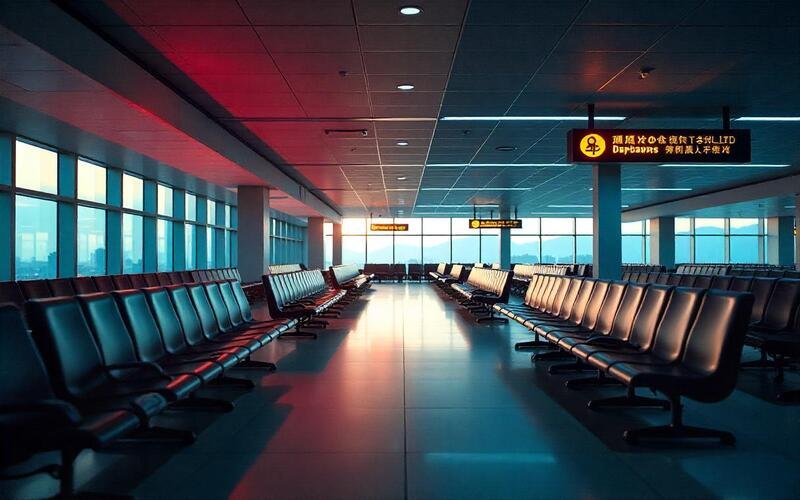
This photo shows the aircraft carrier Shandong sailing in Hong Kong waters, South China, July 3, 2025. A fleet of the Chinese People’s Liberation Army Navy led by the aircraft carrier Shandong arrived in the Hong Kong Special Administrative Region on the day. Photo: Xinhua
On Thursday morning, the aircraft carrier Shandong formation of the Chinese People’s Liberation Army Navy arrived in Hong Kong for a five-day visit, welcomed by a grand ceremony hosted by the Hong Kong Special Administrative Region (HKSAR) government at the Ngong Shuen Chau Barracks. As the Shandong docked, over 700 naval officers and sailors, dressed in white uniforms on the flight deck, formed the Chinese characters “Guo An Jia Hao,” meaning “safe country, sound families,” conveying warm and friendly greetings to Hong Kong compatriots. Fireboats from the HKSAR government welcomed the formation with a traditional water salute, while excited residents gathered to catch a glimpse of the domestically built carrier. This is not only a grand event for military enthusiasts but also a symphony of national strength and sentiment.
As China’s first independently developed aircraft carrier, the Shandong represents a leap forward in the nation’s military and technological capabilities as well as an improvement in comprehensive national strength. Its visit to Hong Kong delivers a clear message to the people in Hong Kong: China possesses the strength to ensure the city’s security and stability while also being a vital force for peace in the Asia-Pacific region. Amid an increasingly complex international landscape, the appearance of this strategic national asset in Hong Kong demonstrates that the motherland is always Hong Kong’s strongest support. It’s not only indicative of China’s defense strength and military confidence, but also serves as a solemn pledge to safeguard the city’s long-term prosperity and stability.
Since its commissioning more than five years ago, the Shandong has been opened for public visits for the first time, choosing Hong Kong as the location, which highlights the central government’s special regard for the city. Since Hong Kong’s return to the motherland, the Chinese Navy’s ships have visited Hong Kong eight times, including the Liaoning carrier group in 2017. In addition, delegations of Olympic champions and astronauts from the Shenzhou spacecraft missions have visited Hong Kong, sparking citywide excitement each time. Now, the Shandong has taken up the baton. When elderly citizens with silver hair raise their binoculars to identify carrier-based aircraft, and when children perched on their fathers’ shoulders eagerly ask about the structure of the carrier, these vivid scenes are forging a cross-generational sense of national identity. They are etching a strong sense of belonging and pride in being part of a powerful motherland deep into the hearts of Hong Kong residents.
“This is our own aircraft carrier!” The Shandong‘s visit has once again set off an “aircraft carrier craze” in the “Pearl of the Orient,” proving that “loving the country and Hong Kong” has become ingrained in the city’s fabric. Tickets booked online for visits were snapped up within a minute of being released. At popular photo spots where the carrier could be seen entering the port, large crowds of Hong Kong residents and tourists gathered early to catch a glimpse. Many described their feelings as “so magnificent, so grand, so proud, so happy,” likening the excitement to that of meeting a beloved celebrity. A video captioned “Wake up! The aircraft carrier is parked downstairs” has gone viral on social media – a testament to the sense of security the Shandong formation brings to Hong Kong. The collective joy of welcoming the Shandong is not only filled with deep national pride, but also reflects the city’s growing confidence in “one country, two systems” and China’s path to modernization.
Arriving at a historic moment – the 28th anniversary of Hong Kong’s return to the motherland and the fifth anniversary of the implementation of the National Security Law for Hong Kong – the Shandong‘s visit carries even greater symbolic significance. Since its return 28 years ago, and with the strong support of the central government, Hong Kong has retained its unique advantages as an international financial center and its reputation as “the world’s freest economy,” while also leveraging the mainland to establish a new position as an important hub for the Belt and Road Initiative. The enactment and implementation of the National Security Law for Hong Kong is widely recognized as a “watershed” moment for the city, marking the transition from chaos to order and from stability to prosperity. Today, Hong Kong’s local GDP has maintained growth for nine consecutive quarters; its global competitiveness has risen to third place in the world, and the amount of foreign direct investment inflows ranks third globally. This year, the amount raised by new listings has ranked first in the world; the city has maintained the top spot for air cargo volumes globally, and its talent competitiveness ranks among the top 10 worldwide.
Additionally, the establishment of the headquarters of the International Organization for Mediation and the acceleration of the Guangdong-Hong Kong-Macao Greater Bay Area construction strongly support Hong Kong’s development logic of “having the strong backing of Chinese mainland and serving as China’s gateway to the world,” reflecting the international community’s broad recognition of Hong Kong’s stability, freedom, and prosperity. People see that the motherland and Hong Kong are achieving mutual success and common development while jointly writing a new chapter in the great rejuvenation of the Chinese nation.
When the anchor of the Shandong aircraft carrier sinks into the waters of Hong Kong, it symbolizes the people of the SAR’s appreciation for a peaceful and stable development environment and their trust in national strength. The five-star red flag on the Shandong carrier and the regional flag of Hong Kong on the shore appear “in the same frame,” vividly documenting the successful practice of “one country, two systems.”
Only with a “safe country” can there be “sound families.” Within the simple yet profound logic of “safe country, sound families,” people see a sweeping vision taking shape along the Pearl River estuary in southern China – a new era in which a strong nation means a thriving Hong Kong.







